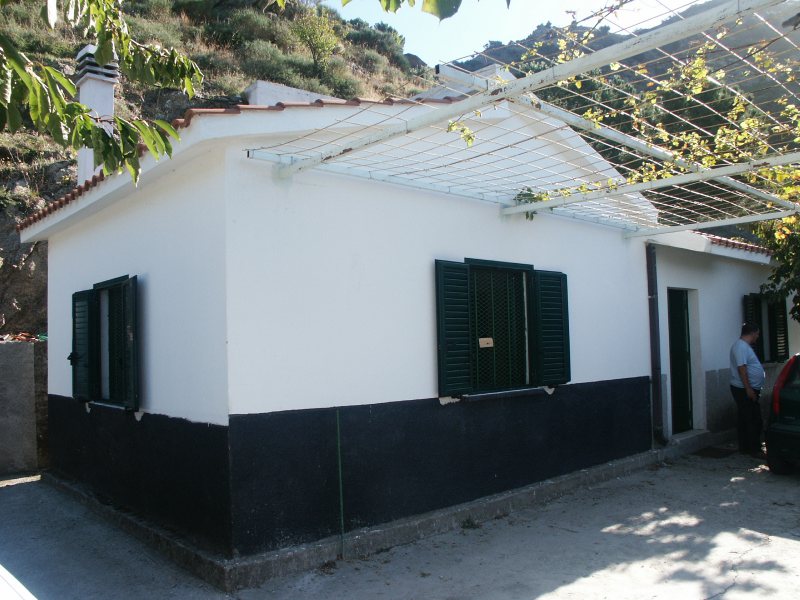Pecorella Station
Disponibilita Camere
Camere
Non ci sono camere disponibili
General Info
Description
This Station consists of a number of one-storey, stone rectangular buildings; the double-pitched roof is tiled, while external walls are plastered white and rest on a stone base. The building, consisting of 5 living rooms is located inside a fenced area providing drinking water and recreational facilities. The surrounding habitat is woodland containing chestnut, parasol pine and larch.
How to arrive
Take the road from Bova Marina to Bova, where, before entering the town, you come to a crossroads. Turn left and follow the road up to Campi di Bova. At about 6 kilometres above Bova, you reach a big bend and a crossroads where no signs are provided. The road to the right leads up to Campi di Bova, but you need to take the left turning which, after about 1 kilometre, takes you to a dirt track, left. Take this and having travelled for a further 250 meters you will arrived at the Station, which is placed in such a position as to permit you to enjoy a wonderful view of Gallicianò and the meanders of the Amendolea River.
Altitude
989 metres above sea level
Source
Guida Caselli Forestali della Province of Reggio Calabria
Edited by Alfonso Picone Chiodo
CAI [ITALIAN ALPINE CLUB] Aspromonte Reggio Calabria Section – AFOR Calabria
Check-in
Check-out
Activities
RECINZIONE: SI
CAMINETTO: SI
ACQUA ALL’ESTERNO: SI
Roghudi

This place name probably comes from the ancient Greek Rochùdios, precipice. In the distant past, this historic village undoubtedly depended for its livelihood on animal husbandry.
Old Roghudi stands at the very centre of the Amendolea River, at about 500 metres above sea level. Following floods in the early 1970’s the entire population of the old hamlet was transferred, by law, to the present site, an administrative unit of the municipal area of Melito Porto Salvo.
This new village, totally devoid of significant architectural characteristics, still lacks many services fundamental to the citizens.
To the territory of Roghudi belongs the lively hamlet of Chorio, situated in a sheltered area. Here broom-carvers and weavers live, repeating old patterns from the Greco-Latin tradition. The quality of the local cheese [the moulds for which are made by the carvers along with a myriad of other typical objects] is highly appreciated and much sought-after by the inhabitants of the surroundings villages.
The local economy is agricultural and includes the production of wheat and olives.
THE NAME
The name comes from the Greek rhogodes [full of crevices] or rhekhodes [harsh].
TOWNLANDS AND LOCALITIES
Chorio e Roghudi Vecchio.
HISTORY
The chief characteristic of Roghudi, the only example in Italy together with Sinnai, in the Sardinian Province of Cagliari, is that it is divided into two separate, non-contiguous parts, each at a considerable distance from the other [about 40 km]. The first part, Roghudi Nuovo [New Roghudi] is situated in the precincts of Melito di Porto Salvo, where it constitutes an enclave containing the town hall; the second part stands inland on the southern slopes of the Aspromonte and consists of the abandoned hamlet of Roghudi Vecchio [Old Roghudi].
In 1971 and 1973, following two really bad floods, Roghudi Vecchio, until then the seat of the Municipal authority, was declared totally uninhabitable. Therefore, it was decided that the inhabitants and the local authority be transferred to a new village built on the Ionian coast.
This checkerboard of houses, built along the SS 106 highway, near Melito di Porto Salvo, hosts the inhabitants of a far more fascinating hamlet, situated on the southern slopes of the Aspromonte, on the banks of the Amendolea river: Roghudi. The name Nuovo, indicates, in fact, its recent construction, as opposed to Vecchio, the name given in 1972 to the original and now abandoned historic centre, which has become the metaphor of the conditions in which many of the inland towns and villages of the Graecanic Area find themselves today. However, in the new town, one can still come across many people who still speak the old Greek language and who are the depositories of a traditional culture that takes shape within the family circle and expresses itself during religious celebrations.
EXPLORING ROGHUDI
An excursion to old Roghudi with the remains of its old buildings, arranged along the summit of a rocky ridge, is a must.
At one kilometre from Roghudi Vecchio, stands the hamlet of Ghorio di Roghudi, home to an important Greek community famous for carving and weaving broom, producing items decorated with patterns belonging to the Greco-Latin tradition.
THE LEGEND OF “LA ROCCA TU DRAGU” (Drangon’s Den)
This name refers to a huge, rock formation, near Ghorio, whose protrusions, according to the legend, were used to feed a monster who safeguarded a treasure. The local people believed that whoever dared approach this rock would be blown away by an enormous gust of wind and thrown headlong into the waters of the river.
Continua a leggere




